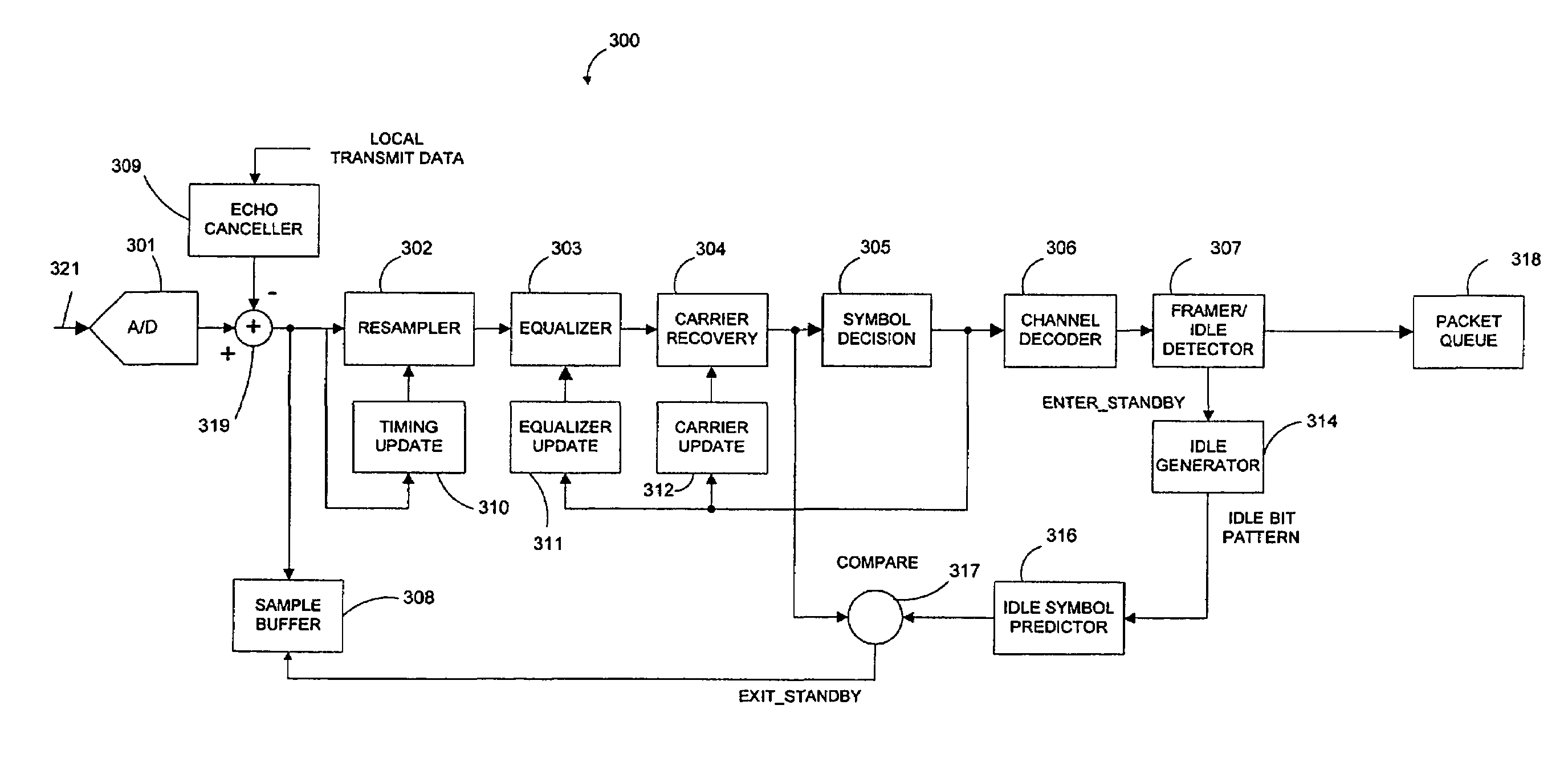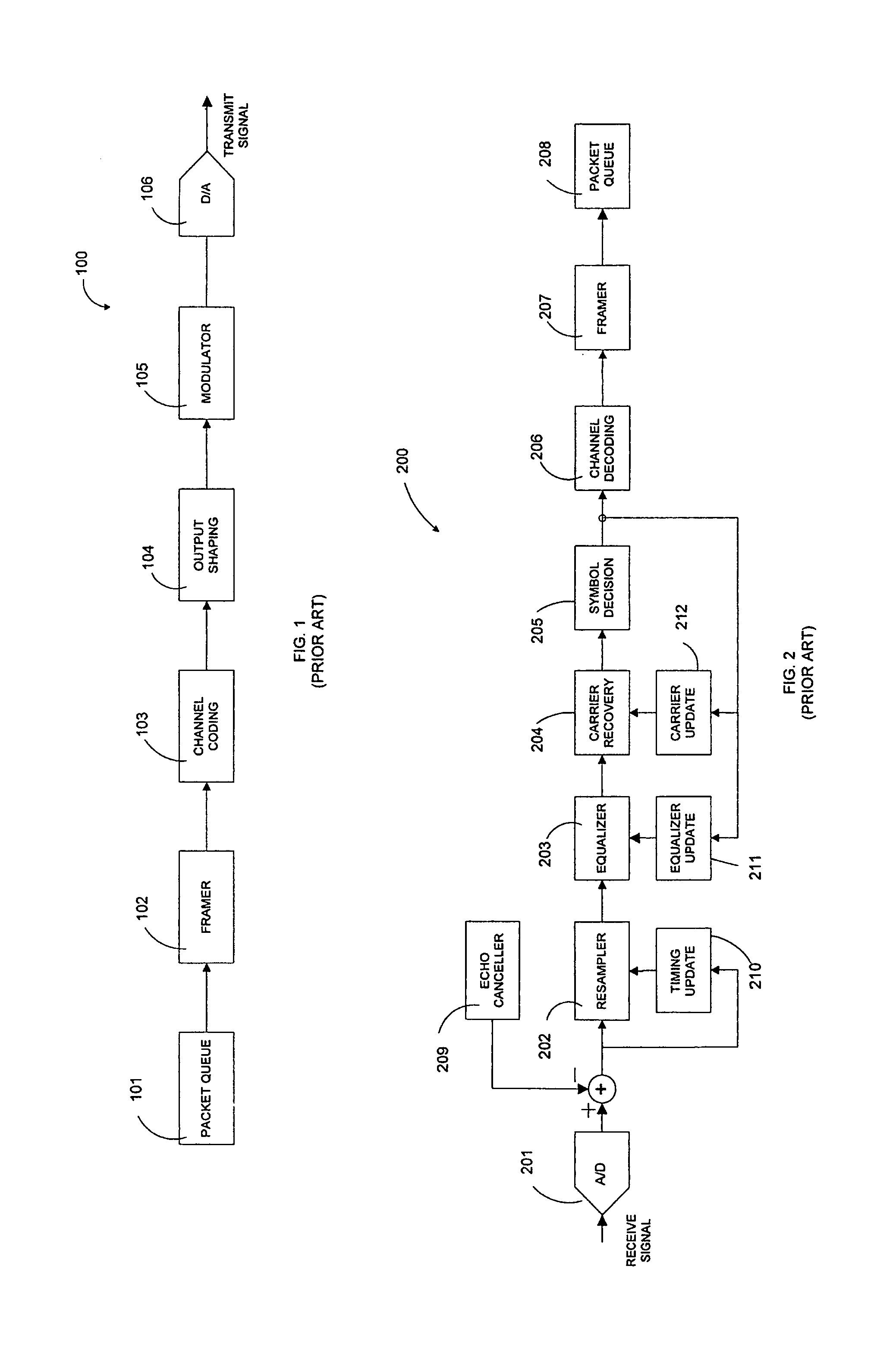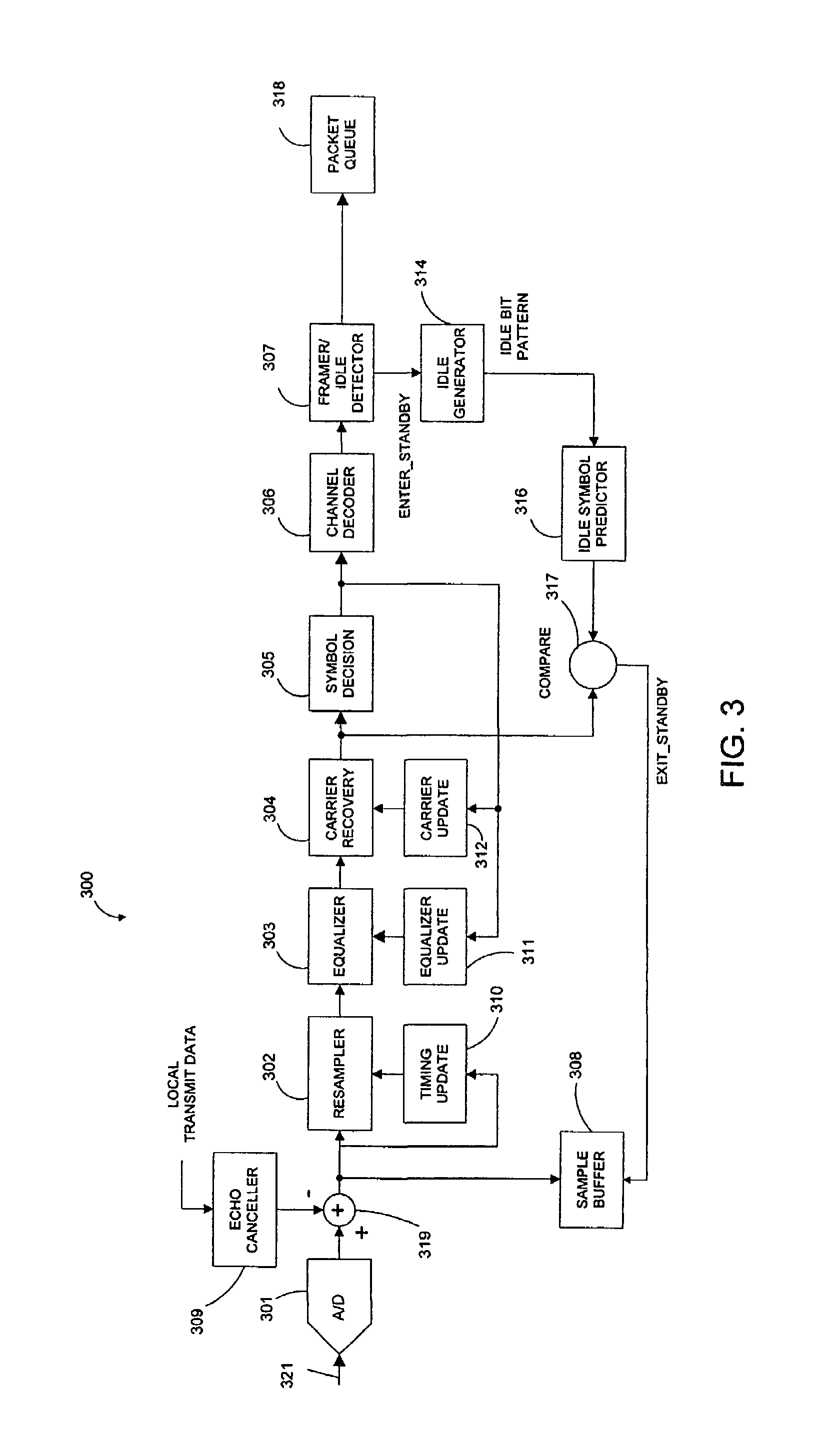Method and apparatus for reducing signal processing requirements for transmitting packet-based data
a packet-based data and signal processing technology, applied in the field of methods and apparatus for reducing signal processing requirements for transmitting packet-based data, can solve the problems of reducing the amount of processing performed by the receiver circuit, affecting the performance of the receiver circuit, and affecting the quality of packet-based information, etc.
- Summary
- Abstract
- Description
- Claims
- Application Information
AI Technical Summary
Benefits of technology
Problems solved by technology
Method used
Image
Examples
Embodiment Construction
[0044]FIG. 3 is a block diagram of a receiver circuit 300 of a modem in accordance with one embodiment of the present invention. Receiver circuit 300 includes A / D converter 301, resampler 302, equalizer 303, carrier recovery circuit 304, symbol decision circuit 305, channel decoder 306, framer / idle detector 307, sample buffer 308, echo canceler 309, timing update circuit 310, equalizer update circuit 311, carrier update circuit 312, idle generator 314, idle symbol predictor 316, comparator circuit 317, packet queue 318 and summing node 319. In combination, carrier recovery circuit 304 and symbol decision circuit 305 form a demodulator. In the described embodiment, A / D converter 301 is implemented by a coder / decoder (codec) chip, while the remaining elements of receiver circuit 300 are implemented by a digital signal processor (DSP). In other embodiments, the elements of receiver circuit 300 can be implemented by other means, such as a general purpose processor. Receiver circuit 300 ...
PUM
 Login to View More
Login to View More Abstract
Description
Claims
Application Information
 Login to View More
Login to View More - R&D
- Intellectual Property
- Life Sciences
- Materials
- Tech Scout
- Unparalleled Data Quality
- Higher Quality Content
- 60% Fewer Hallucinations
Browse by: Latest US Patents, China's latest patents, Technical Efficacy Thesaurus, Application Domain, Technology Topic, Popular Technical Reports.
© 2025 PatSnap. All rights reserved.Legal|Privacy policy|Modern Slavery Act Transparency Statement|Sitemap|About US| Contact US: help@patsnap.com



